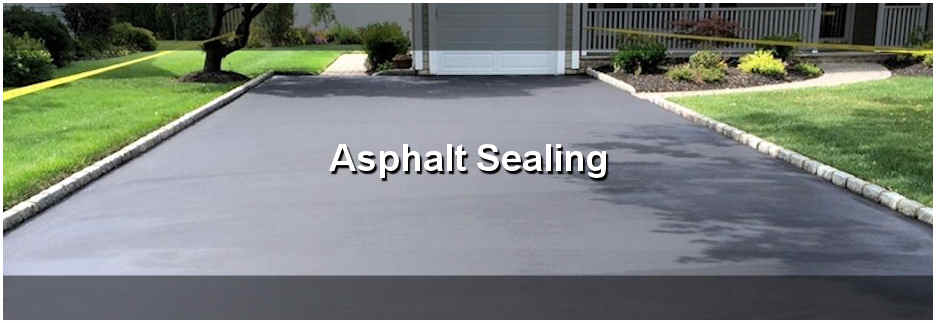Cold Mix Asphalt Vs. Hot Mix Asphalt: Which Is Right for You?

Make-up Differences
Cold mix and warm mix asphalts differ considerably in their structure, with unique attributes that affect their efficiency and applications. Cold mix asphalt is generated by emulsifying the asphalt binder with water and an emulsifying representative before blending it with accumulation. This technique enables the asphalt to be workable at lower temperature levels, making it ideal for temporary repair services and for usage in colder weather. Warm mix asphalt, on the various other hand, is made at heats, usually in between 300-350 ° F, which aids to attain far better compaction and a more durable end product. The hot mix asphalt production process includes heating up the aggregate and asphalt binder individually before integrating them at the asphalt plant.
Moreover, chilly mix asphalt has a tendency to be less dense and more flexible than warm mix asphalt. This adaptability makes it far better fit for areas with greater levels of motion, such as driveways or roadways with heavy web traffic. In contrast, hot mix asphalt is known for its high resilience and resistance to rutting and breaking, making it a preferred choice for freeways and high-traffic roadways where longevity is essential.
Installation Refine Variations
The process of installing cool mix and hot mix asphalt exhibits notable differences in their needs and treatments. Cold mix asphalt, being a much more flexible product, can be applied straight from the bag or container onto the pothole or harmed area. It calls for very little preparation work, such as cleansing the area and condensing the chilly mix with hand devices. This makes it a practical option for short-lived and quick fixes. On the other hand, warm mix asphalt requires a much more sophisticated installation procedure. It involves warming the mix to heats before laying it down on a properly ready base. The preparation includes condensing the base, applying a tack layer, and using hefty equipment like pavers and compactors for a durable and smooth surface. As a result of the heating needs, hot mix asphalt setups are generally accomplished by professionals with check it out specialized equipment, making certain a more structurally sound and long-term outcome.
Sturdiness and Long Life Variables
When considering asphalt options, longevity and long life are vital elements to evaluate for enduring pavement efficiency. Hot mix asphalt (HMA) is known for its phenomenal toughness and durability.
In regards to durability, HMA typically outmatches CMA because of its remarkable strength and resistance residential properties. HMA pavements have a longer life span, needing less constant repair services and maintenance, which can convert to set you back savings over time. Furthermore, HMA pavements are much more easily personalized to satisfy details job needs, even more enhancing their longevity.
Cost Factors To Consider
Considering the economic effects is a crucial facet when reviewing the selection in between warm mix asphalt (HMA) and chilly mix asphalt (CMA) for pavement projects. While the first price of warm mix asphalt is normally greater than that of cold mix asphalt, HMA frequently provides a more cost-effective remedy in the lengthy run due to its exceptional sturdiness and durability.
In addition to product costs, it's necessary to consider the expenditures associated with setup and maintenance when contrasting HMA and CMA. Eventually, the choice between HMA and CMA need to take into account not just the first cost however additionally the lasting financial ramifications to determine the most economical alternative for the specific sidewalk task.
Environmental Impact Comparison
Comparison of the ecological effects in between hot mix asphalt (HMA) and chilly mix asphalt (CMA) exposes distinct differences in sustainability practices. HMA production calls read this post here for high temperature levels, leading to raised power usage and greenhouse gas discharges.
Furthermore, making use of CMA typically includes recycling existing asphalt sidewalk, advertising resource conservation and reducing the quantity of waste sent out to landfills. This recycling facet additionally improves the sustainability of CMA compared to HMA. On the whole, when taking into consideration the ecological impact, CMA emerges as an extra ecologically sustainable selection because of its lower power demands, decreased emissions, and the possibility for recycling existing products. By selecting CMA over HMA, road construction tasks can contribute favorably to ecological conservation efforts.
Conclusion
In final thought, the selection between chilly mix asphalt (CMA) and warm mix asphalt (HMA) depends on different elements such as make-up, setup process, resilience, durability, cost, and environmental effect. asphalt patch repair. While CMA offers a affordable and quick service for small repairs, HMA guarantees remarkable durability and longevity for heavy web traffic locations. Consider these factors thoroughly to figure out which kind of asphalt is the appropriate selection for your paving requires

Considering the monetary effects is an important facet when evaluating the option in between warm mix asphalt (HMA) and cold mix asphalt (CMA) for pavement tasks. While the initial cost of hot mix asphalt is commonly higher than that of cold mix asphalt, HMA commonly gives a more affordable option in the lengthy run due to its superior sturdiness and durability. asphalt repair.Contrast of the environmental influences between this website hot mix asphalt (HMA) and chilly mix asphalt (CMA) discloses distinctive distinctions in sustainability practices.In verdict, the selection in between cool mix asphalt (CMA) and warm mix asphalt (HMA) depends on numerous factors such as composition, installation process, sturdiness, durability, expense, and ecological effect
Comments on “Swift Solutions for Asphalt Patch Repair: Optimal Sealing Techniques”